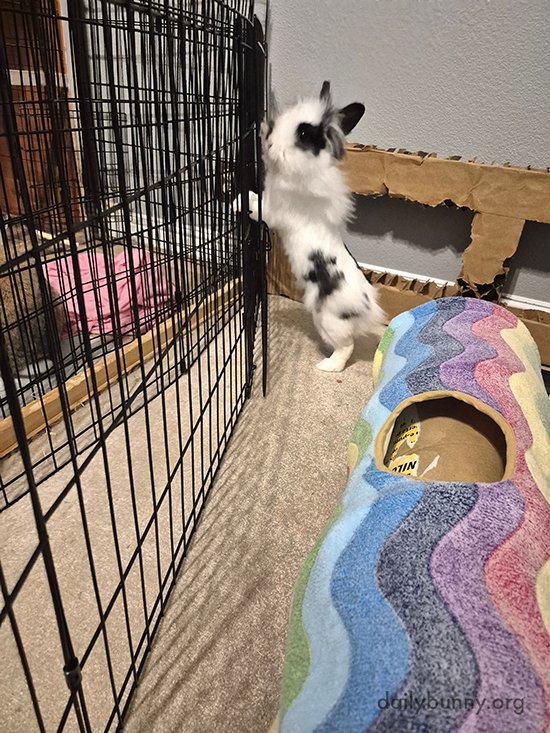2004 Adidas

Fauja Singh was killed by a hit-and-run driver earlier this week as he strolled through his native village in India. More on his remarkable life here.

As any cat person who has had to leave their cat for a while knows, cat sitting is a very important job. And it's a difficult job too. Every cat is a little different, every cat has their own needs. It's your job, as the cat owner, to leave clear instructions to your cat sitter, to pay your cat sitter properly, and to show gratitude before, throughout and after. Because these people, who invest their time and love into taking care of someone else's pet, deserve it.
Sometimes, you manage to find a kind human who is willing to do the cat sitting for free. That's amazing. It probably means that you have a relationship with them and that they like cats enough to do it and to find joy in doing it. Not paying them does not mean that you neglect all the other things. You still have to be clear in your instructions and to be thankful. What you for sure don't get to do is tell your cat sitter that they need to pay $1000 to install a cat flap in their own house because your cat needs it.
Fluff. Chaos. Drama! Our weekly cat newsletter has it all - subscribe here.

While I agree that no celebration is complete without cake, I also think some celebrations should maybe be a bit more private than others:

Please tell me you invited the in-laws.
Ahhh, that sweet, sweet moment when your wife throws you a surprise Vasectomy Recovery party:

I hear if you buy two they throw in the bag of frozen peas for free.
(OH YES I DID.)

I looked it up. It really is a thing. So I have two questions: who are you getting this cake for, and how will that not end badly for you?
Of course, nothing will lead to a round of denials as much as this:

C'mon. Does anyone ever admit to watching this show?
But for the ultimate "I-just-learned-something-I-never-wanted-to-know-about-you" dessert, we have this:

So many puns, so few of them safe for work...
Let's all give a hand to Heather M., Alison K., Laura W., Helen J., & Nicole A. for today's wrecks.
****
Funny story about that last cake: it was commissioned by none other than Mr. Bill Murray during the filming of Moonrise Kingdom as a joke for one of the guys working on set. (Cameron was turning 21.) Nicole worked craft services for the movie, and was responsible for fetching the cake from a local bakery. She tells me Murray also insisted on taking Cameron out for his first drink, and was fantastic to the whole crew, and I am insanely jealous of all of them. :)

Thanks, Lisa and bunnies Mochi and Maisie!
Listen and subscribe on Apple Podcasts, Spotify, and all major podcast apps.
Johanna Mayer: It’s a beautiful day in Nordelta, a well-to-do suburb of Buenos Aires. The sky is blue, the grass is green, and the nearby lake is sparkling. A perfect day to do some yard work, you think? You open the door feeling pretty good about yourself. But when you step outside, you are horrified. Someone has completely destroyed your well-tended yard. Your garden? Wrecked. Your rosebush? Decimated. Your lawn? Covered in poop. And then you see him: your neighbor, the one who recently moved in, hanging out on your lawn like he owns it.
You scream at him, tell him to beat it. But your neighbor only stares back at you serenely with sleepy eyes. And then you realize your neighbor isn’t alone. In fact, his entire family is on your lawn. You are thoroughly outnumbered. Oh, and one other tiny detail about your neighbor: he’s a capybara. You look around, and you see capybaras here, capybaras there. Capybaras everywhere.
I’m Johanna Mayer, and this is Atlas Obscura, a celebration of the world’s strange, incredible, and wondrous places. Today, places editor Diana Hubbell and I have two stories of animal takeovers. First, we head to Argentina to hear about this highly unusual neighbor feud and what capybaras can say about class and politics. Then, we’ll head to an island where, once a year, for just a few short days, millions of crustaceans all go on a massive road trip together.
This is an edited transcript of the Atlas Obscura Podcast: a celebration of the world’s strange, incredible, and wondrous places. Find the show on Apple Podcasts, Spotify, and all major podcast apps.

Johanna: So, what do you do when a thousand capybaras suddenly show up in your hometown? I’ll tell you what I would do. Rejoice. They are objectively the best animal out there. Rectangular heads, sleepy eyes, wiry fur, 130 pounds of the world’s largest, cutest rodent. They’re really social animals. They travel in these adorable packs. Have you ever seen a baby capybara? Do yourself a favor and Google one right now. In my opinion, the more capybaras, the merrier. However, that is not how many residents of Nordelta, Argentina, reacted.
Today, Nordelta is a wealthy enclave, about 25 miles outside Buenos Aires. But it wasn’t always that way. Years ago, the area was a rich and fertile wetland. It’s right along the Rio Paraná, a massive river that runs for 3,000 miles. The region was full of wildlife, including herds of capybaras. Can you imagine a more beautiful sight than a family of capybaras loping alongside a vast river? For many years, these wetlands were their home. But in the 1990s, developers cleared the wetlands to build Nordelta. The capybaras were forced out. They disappeared from the region, but they never really left. They just remained hidden. The capybaras came out at night, darted between trees, stayed out of the way of their new human neighbors.
So how did the capybaras rise up from hunkering down in hedges to infiltrating a rich suburban community? The tide turned for the capybaras in 2020. When people holed up inside for COVID restrictions, the capybaras realized this was their moment, their time to shine. They left their hedges, tiptoeing further and further into Nordelta, spreading out in parks that were now vacant. Then an unusually dry winter hit, and a lot of the grasses in those parks died. After this, the capybaras were further emboldened. They started venturing onto people’s lawns. And they got busy. In more ways than one, they began reproducing like crazy. Some scientists estimate that the capybaras boosted their numbers by 16 percent in a single year. The capybaras were back. And the residents of Nordelta were not happy about their new neighbors.
The capybaras crashed through the wealthy suburb like rodent-shaped godzillas. They lumbered across the street, stopped traffic. They munched on people’s gardens, got into fights with their tiny dogs. Some people even brought out their hunting rifles to try to ward them off. Still, no one was immune to the invasion of the capybaras. They even sat placidly under the hedges that surrounded a famous soccer player’s mansion. But among all this havoc and distress over the invading capybaras, another reaction emerged. While some Nordelta residents were fuming, others began celebrating the capybaras as unintentional class warriors.
“Banco fuerte a los carpinchos peronistas de Nordelta recuperando su hábitat,” one person wrote on Twitter. “My total support for the Peronist carpinchos of Nordelta recovering their habitat.” Carpincho’s the Spanish word for capybara. Another wrote, “The capybara revolution.”
The comments were only sort of tongue-in-cheek. Tensions around the development of Nordelta run deep. In addition to destroying the capybaras’ natural habitat, the destruction of the wetland also meant that the soil can no longer absorb heavy rains, which then flood the surrounding areas, which tend to be where poorer folks live. And it wasn’t only radical leftists celebrating the invading capybaras. Ecologists and scientists joined the chorus. The capybaras weren’t invading Nordelta, one Argentinian ecologist argued. Rather, it’s the other way around. It was Nordelta that invaded the capybaras’ home. The capybaras were simply returning. Nature was healing. So, what’s the fate of the Nordelta capybaras? These unwitting class warriors? Well, they are certainly keeping busy. By some estimates, the Nordelta capybaras have multiplied to about a thousand today, tripling their numbers in just a few years.
In early 2025, the Buenos Aires government approved wildlife population control plans, aka capybara birth control. But the fight’s not over. The capy’s human allies remain vocal. One group of neighbors formed a group called Carpinchos Nordelta, Somos Su Voz, or Nordelta Capybaras, We Are Your Voice. The group advocates for more green areas that are connected via natural corridors to allow the capys to move around while still being protected. And in the meantime, some Nordelta locals have even begun to adjust to their new neighbors. Some residents have stopped cutting their grass. They just let the natural rodent lawnmowers do the work. As for me, I say, que vivan los carpinchos.
Next up, Places editor Diana Hubble takes us to an island in the middle of the ocean to see one of the most spectacular and reddest migrations on Earth.
Diana Hubbell: Picture this. It’s November and you find yourself on the shores of Christmas Island. Although officially part of Australia, this 52-square-mile landmass in the Indian Ocean is more than 3,000 miles from Sydney. It’s dark out, but you can still make out the coastline by the light of the fourth quarter moon. Then you look down at your feet and you realize that you’re in the middle of the ocean. You can still make out the coastline by the light of the fourth quarter moon. Then you look down at your feet and you make something else out. The ground is moving.
Now, the whole of Christmas Island has less than 1,700 residents. Well, less than 1,700 human residents, I should say. Because this tiny island is home to more than 100 million red crabs. And right now, they’re on the move. All of them. Once a year, when the tide is high, these little crustaceans journey en masse to the sea to mate and lay their eggs. For a few short days, they effectively take over the entire island. It’s impossible to go just about anywhere without seeing them scuttling sideways on their relentless, all-important march to procreate.
We actually have humans to thank for this particular animal takeover. See, it wasn’t always like this on Christmas Island. Back in the 1800s, the red crab population was considerably smaller. Until 1903, the Maclear’s rat, an endemic species on the island, treated this mass migration like a big buffet. Then when humans showed up, they accidentally brought along diseases that wiped out the rats. With no rats, the crab population exploded. Christmas Island red crabs are pretty curious creatures. For starters, they basically only live here, although you’ll find a few of them scattered around the coral atolls of the Cocos Islands. The crabs are tiny, averaging just 4.6 inches across.
True to their name, most have a bright red carapace, although occasionally you’ll find an orange or even purple specimen. Unlike hermit crabs or other ocean-dwelling species you might be familiar with, these terrestrial crabs thrive in the island’s rainforests. They can live for up to 30 years, not bad for an itty-bitty crustacean. Although there are always millions of crabs on Christmas Island, you rarely see them for much of the year. That’s because they take care to avoid too much heat or direct sunlight, lest it dry out their fragile gills. They prefer to burrow deep in the damp rainforest floor, feasting on leaves and scraps and whatever else they can find.
Through some evolutionary quirk, red crabs spend basically their whole lives on land, but their young can only be born in the ocean. So when the time comes, they ready themselves for a treacherous journey that can take days. Most of them walk more than 12 miles each way. At any moment they could be squashed or eaten or dehydrated in the baking sun.
Luckily for these little guys, the local humans are very much in favor of this animal takeover. Each year, the whole island mobilizes to make sure as many red crabs as possible make it to their destination safely. You can expect to see giant signs all over the place saying, “Road Closed Crab Crossing.” Some even build crab bridges over roads and ditches. Many of these good neighbors even go the extra mile and offer passing crabs a good quick soak in water to keep them moist on their travels. I think of it a little in the way that supporters cheer marathon runners on.
What I find fascinating about all of this is that somehow all of these crabs know exactly what to do and when to do it. The migration only kicks off after the first rainfall when the air is humid. And they always migrate exactly according to the lunar cycle so as to match the tides. The males are the first ones to arrive at their destination. As soon as they’re near the water, they burrow into the ground, creating a safe haven for their soon-to-be partners. Then the females show up. They mate, then settle into the burrows while the males scurry back to the rainforest. Three days later, they emerge with a clutch of eggs and crawl to the sea.
Here’s the scary part: Red crabs can’t swim at all. That means one strong wave would be enough to drown them. But they bravely wade into the shallows. When they make it, they do something that I can only really describe as adorable. As the females release their eggs, they lift up their tiny claws and do what looks like a little dance. I know I’m anthropomorphizing here, but it’s hard not to think that they look overjoyed and so relieved to have made it. Part of what makes this spectacle so amazing to watch is the sheer scale of it. A single female crab carries around 100,000 eggs. And so many are released into the water at the same time that the ocean turns almost black.
But remember how human activity got us here in the first place? Now, our species once again has accidentally disrupted the island’s fragile ecosystem thanks to another very unwanted animal takeover. Yellow crazy ants, considered one of the most destructive invasive species in the world, have made their way here. These ants are originally from West Africa, but scientists think that some must have stowed away along with cargo freight. However they got here, these ants are doing real damage. They form enormous super colonies in the forest floors and they’ll eat just about anything, including red crabs. They may be small, but they attack by the hundreds and they spray formic acid. By some estimates, the ants have wiped out as many as 10 to 15 million of the crabs. Hope is not lost though. Efforts to control the ant population with poison and wasps have been somewhat successful. Once again, humans need to band together to make sure these little crabs can continue to do their dance for generations to come.
Listen and subscribe on Apple Podcasts, Spotify, and all major podcast apps.
Our podcast is a co-production of Atlas Obscura and Stitcher Studios. The people who make our show include Dylan Thuras, Doug Baldinger, Chris Naka, Kameel Stanley, Manolo Morales, Beaudelaire, Amanda McGowan, Alexa Lim, Casey Holford, and Luz Fleming. Our theme music is by Sam Tindall.
Taking care of a friend's cat seemed like a simple favor for this 27-year-old, especially since the friend's apartment was close to her work, making the commute easier. She stayed at the apartment from Wednesday to Saturday morning, happy to help and confident the cat was well cared for. But when her friend's flight got delayed, the situation got complicated.
The friend asked her to make a two-hour round trip to feed the cat an extra meal. She explained she was already out having dinner and had plans afterward, believing missing one meal wouldn't hurt the cat. However, her friend reacted strongly, sending urgent messages and accusing her of neglect.
Now, she's left wondering if she was in the wrong for refusing to drop everything to feed the cat during a delay. Was she being careless, or was she reasonable in expecting the cat to be fine for a short time without extra attention? She returned the key and set boundaries but feels conflicted, curious whether others think she should've done more or if she made the right call standing her ground. After all, sometimes even the best intentions can leave you tangled in a catty situation.
Fluff. Chaos. Drama! Our weekly cat newsletter has it all - subscribe here.
Some weeks feel like they're dragging their tail all the way from Monday to Monday again, and the grind just won't quit. The to-do list grows faster than your unread messages, your coffee lost its magic, and the weekend is still not here. But in the middle of this chaos, there's one guaranteed way to claw your way back to joy: funny cat memes.
Yes, fellow feline fanatics - it's time to call in the emotional support floofs. Because when deadlines loom and everything feels like a spreadsheet-powered fever dream, nothing hits quite like a cat dramatically knocking things off a shelf or yelling into the void at 3 AM for absolutely no reason.
Fluff. Chaos. Drama! Our weekly cat newsletter has it all - subscribe here.
You know, feline fam, what you choose to fill your cup with has a huge effect on your day. This is both a physical and meowtaphorical statement. Let's tackle the physical one first. We can already tell you that you should fill your cup with more water. Hydration is impawtant, friends.
The second, and the topic of our listicle today, is about your mewd. You can choose to fill your cup with negativity and live a lifestyle that purrfectly reflects that, or, you choose to fill your cup with pawsitivity and be the change you wish to see in the world. Cat people are some of the best examples of this. Cat people will do anything for cats, even if they've never met them before. In the story below, one woman adopted a 20-year-old senior cat from his shelter so he wouldn't spend the rest of his life in a cage. And if that's not inspawrational, we're not sure what is.
Fluff. Chaos. Drama! Our weekly cat newsletter has it all - subscribe here.
 Data loss will never be a real headache, as long as you own the professional yet easy-to-use Coolmuster iPhone Backup Extractor software. With it, you can extract iPhone data from iTunes backup files on Windows without connecting iPhone to PC.
Data loss will never be a real headache, as long as you own the professional yet easy-to-use Coolmuster iPhone Backup Extractor software. With it, you can extract iPhone data from iTunes backup files on Windows without connecting iPhone to PC. Falco Color Wires is an exciting puzzle game made on the Falco Engine in which you need to connect the same color wire outputs. This game will help you develop your attention and ingenuity. Can you complete all the levels in the Falco Color Wires game?
Falco Color Wires is an exciting puzzle game made on the Falco Engine in which you need to connect the same color wire outputs. This game will help you develop your attention and ingenuity. Can you complete all the levels in the Falco Color Wires game?Universities love rules as much as cats love ignoring them.

Each corner of campus comes with a policy document, drafted by someone terrified of unplanned joy. Bedtime hours, kettle wattage, poster dimensions, all recorded. Yet the simplest threat to order is never a student riot. It is a soft purring intruder with whiskers.